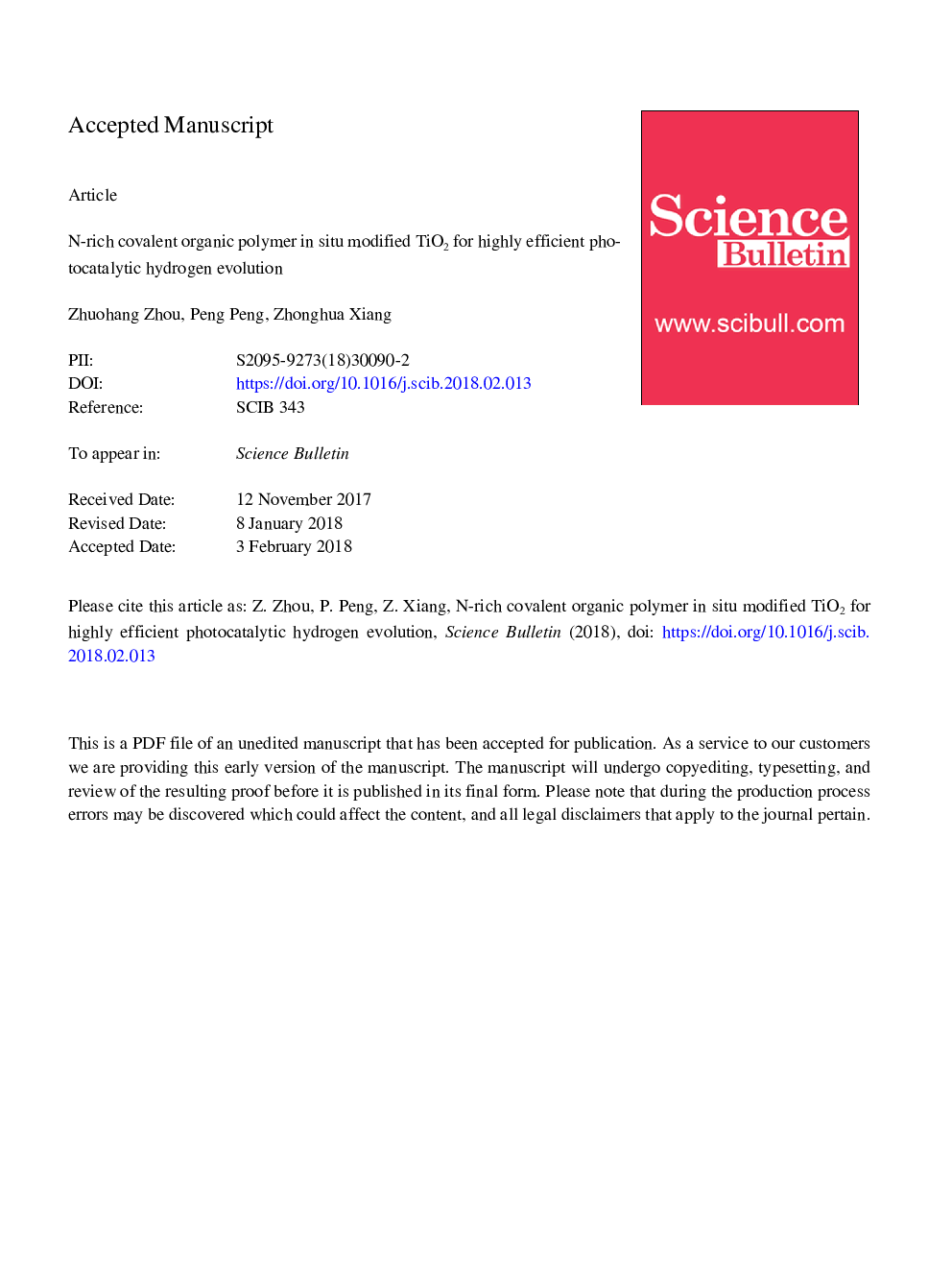| Article ID | Journal | Published Year | Pages | File Type |
|---|---|---|---|---|
| 8917316 | Science Bulletin | 2018 | 15 Pages |
Abstract
TiO2 has been everlastingly employed as popular photocatalyst for water splitting. However, the wide band gap (3.0-3.2â¯eV) and poor absorption to visible light of TiO2 result in a low utilization of solar energy and limit its large-scale application. To decrease its band gap and promote the utilization of full solar energy, we here modified TiO2 by in situ growth of N-rich covalent organic polymer (termed as COPHM). During the in situ growth of COPHM on the surface of TiO2, intimate contacts between TiO2 and COPHM were built and core-shell structures were finally formed. The derived TiO2@COPHM demonstrated a narrower band gap (2.53â¯eV) compared to raw TiO2 (3.13â¯eV) and improved absorption to visible light. The optimal TiO2@COPHM hybrid exhibited excellent hydrogen evolution performance of 162.7â¯Î¼molâ¯hâ1 under simulated sunlight which was more than 3â¯times higher than raw TiO2 (51.3â¯Î¼molâ¯hâ1). Particularly, visible light hydrogen evolution rate of TiO2@COPHM reached 0.65â¯Î¼molâ¯hâ1 while non-hydrogen generation was observed using raw TiO2.
Related Topics
Physical Sciences and Engineering
Chemistry
Chemistry (General)
Authors
Zhuohang Zhou, Peng Peng, Zhonghua Xiang,
